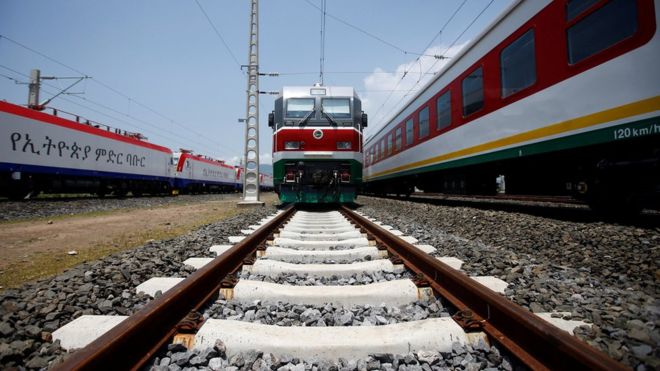
Fortune News | Mar 30,2019
A subcommittee formed to handle legal issues related to Ethiopian Airlines Flight 302 that crashed early last month has started the process of crafting a strategy to quantify the loss incurred to proceed with a compensation claim.
Formed under a steering committee chaired by Dagmawit Moges, minister of Transport, the team is led by the Office of the Attorney General.
The subcommittee will be working to determine claim losses and compensations. The committee is one of six subcommittees formed under the auspices of the steering committee immediately following the crash.
What damages require compensation, who is eligible for compensation, what the level of compensation is and who is the responsible party for any eventual claims will be investigated and addressed, according to Muse Yiheyies, communications director of the Ministry of Transport.
The Aircraft Accident Investigation Bureau of Ethiopia, which has been leading the investigation under the Ministry of Transport, had released a preliminary report that indicates that the pilots on command followed the proper procedures, but uncommanded nose-diving was encountered before the crash.
“Shortly after takeoff, the Angle of Attack Sensor’s recorded value became erroneous, and the left stick shaker activated and remained active until near the end of the flight,” reads the preliminary report. “The airspeed and altitude values from the left air data system began deviating from the corresponding right side values.”
The 33-page investigation report has also established that the pilots were certified, the aircraft was issued an airworthiness directive, the takeoff was proper, and the cockpits followed the manufacturers’ and Federal Aviation Administration (FAA) manual to manage the emergency.
The plane crashed shortly after takeoff from Bole International Airport on its scheduled flight to Nairobi, Kenya. On board were 149 passengers from 35 different countries, the pilot, the co-pilot, crew members and a security person. None survived the crash.
The flight took off on March 10, 2019, at 8:38am under the command of the 29-year-old captain, Yared Getachew, and his co-pilot, Ahmednur Mohammed. While Yared had logged 8,122 hours of flight time, the first officer had flown a total of 361 hours, according to the preliminary report.
A subcommittee formed to handle legal issues related to Ethiopian Airlines Flight 302 that crashed early last month has started the process of crafting a strategy to quantify the loss incurred to proceed with a compensation claim.
Even though the preliminary report did not clearly mention that the nose-down was caused by the Manoeuvring Characteristic Augmentation System (MCAS), an automated safety system designed to prevent the plane from stalling or losing lift, industry insiders believe that the system was the cause of the crash.
This system was previously reported as a cause of Lion Air’s plane crash, which claimed 189 lives five months ago when Lion Air Flight 610 fell into the Java Sea shortly after takeoff from Jakarta, Indonesia last October.
“I am not surprised [the MCAS is not explicitly mentioned in the preliminary report],” Tewolde GebreMariam, CEO of Ethiopian Airlines, told CNN, adding that the accident investigation will continue with detailed analysis until the full and detailed report is released after a year.
“We all know from the Digital Flight Data Recorder (DFDR) and Cockpit Voice Recorder (CVR) that there were uncommanded nose-down automatic activations that occurred three times in the plane,” Tewolde said.
The preliminary report has also forwarded two safety recommendations for Boeing and aviation authorities. It advised the aircraft manufacturer to revise the control system, while aviation authorities were requested to make sure the control system has been adequately addressed.
On the same date the preliminary report was released, Boeing which has booked nearly 5,000 orders for the model and has already supplied 350 to 54 operators around the world, issued an apology. The company also announced that they have been working on software updates to fix the problem.
“We at Boeing are sorry for the lives lost in the recent 737 Max accidents,” said Dennis Muilenburg, CEO of Boeing.
“We now know that the recent accidents were caused by a chain of events,” reads a statement from Boeing, “with a common chain link being erroneous activation of the aircraft’s MCAS function.”
The statement adds that “we have the responsibility to eliminate this risk, and we know how to do it.”
One of Ethiopian Airlines’ Boeing 737 Max 8 models can be seen parked at the Bole International Airport, in Addis Abeba, near the hangers.
Boeing proclaims that it has finalised software update and is on the final certification stage.
After the crash, Ethiopian Airlines grounded all of its Boeing 737 Max 8 aircraft. The crashed plane was the fifth in an initial order of 30 planes that have a minimum price of 120 million dollars. China was the first to ground the planes after the crash followed by over 60 countries and operators including the United States.
“The Ethiopian government will carry out the legal procedure as per international and our own legal procedures,” Dagmawit told journalists last Thursday, April 4, 2019, at a press conference held at the premises of the Ethiopian Roads Authority (ERA) on Ras Abebe Aregay Street.
Legal proceedings against Boeing and Ethiopian Airlines have already started.
Boeing was sued in Chicago by two separate fillings: a Rwandan child whose father was killed in the accident, and the parents of an American woman who was on a work trip aboard Flight 302.
The legal aspects have also attracted many lawyers both within and outside of the country. Lawyers are approaching family members of the victims to represent them in a court battle that is expected to take three to five years.
One of the families approached by a legal firm from France is the family of Sintayehu Shafi, a 33-year-old senior instructor at the Motor & Engineering Company of Ethiopia (MOENCO), who was on board the fateful flight heading to Nairobi for a week-long training facilitated by his employer.
“We wanted to observe the situation first,” said Leul, brother of Sintayehu, “thus we declined the request.”
The family is also closely working with MOENCO to handle all of the issues including legal issues, according to Leul.
Shakespear N. Feyissa, an Ethiopian-born legal practitioner for 17 years in Seattle, where Boeing 737 Max 8 models are manufactured, is one of the lawyers who came to Ethiopia to work with victims’ families in suing Boeing.
Partnering with 20 lawyers that have experience in trial and aviation law in Seattle and Chicago, he is in Addis Abeba now to represent clients against Boeing.
“We have already interviewed pilots and engineers who know the MCAS well,” Shakespear told Fortune. “We aim to hold Boeing liable and make sure that same incident does not happen to other families.”
Shakespear’s law office has won some verdicts in the United States, including a Seattle newscopter that crashed on the street in 2014.
“Boeing would try the trial in Ethiopia and make Ethiopian Airlines the co-defendant,” Shakespear said. “We will work to prevent that from happening.”
Boeing claims that it has established a committee that will confirm the effectiveness of the company’s policies and processes for assuring the highest level of safety on the 737-MAX program.
“The committee will also assure our other aeroplane programs, and recommend improvements to our policies and procedures,” reads a statement from Boeing.
PUBLISHED ON
Apr 06,2019 [ VOL
19 , NO
988]

Fortune News | Jul 06,2019

Radar | Aug 12,2023

Fortune News | Apr 24,2021

Radar | Jul 13,2020

Viewpoints | Sep 14,2019

Dec 22 , 2024 . By TIZITA SHEWAFERAW
Charged with transforming colossal state-owned enterprises into modern and competitiv...

Aug 18 , 2024 . By AKSAH ITALO
Although predictable Yonas Zerihun's job in the ride-hailing service is not immune to...

Jul 28 , 2024 . By TIZITA SHEWAFERAW
Unhabitual, perhaps too many, Samuel Gebreyohannes, 38, used to occasionally enjoy a couple of beers at breakfast. However, he recently swit...

Jul 13 , 2024 . By AKSAH ITALO
Investors who rely on tractors, trucks, and field vehicles for commuting, transporting commodities, and f...

Oct 4 , 2025
Eyob Tekalegn (PhD) had been in the Governor's chair for only weeks when, on Septembe...

Sep 27 , 2025
Four years into an experiment with “shock therapy” in education, the national moo...

Sep 20 , 2025
Getachew Reda's return to the national stage was always going to stir attention. Once...

Sep 13 , 2025
At its launch in Nairobi two years ago, the Africa Climate Summit was billed as the f...